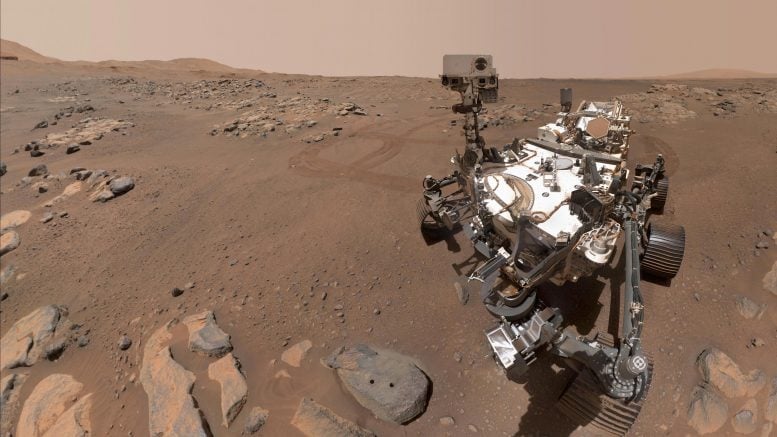
Using its WATSON camera, NASA’s Perseverance Mars rover took this selfie over a rock nicknamed “Rochette,” on September 10, 2021, the 198th Martian day, or sol, of the mission. Two holes can be seen where the rover used its robotic arm to drill rock core samples. Credit: NASA/JPL-Caltech/MSSS
As the Sun spews hot, energized gas from its outer atmosphere (corona) far across space, and Mars and Earth align on opposite sides, this causes interference with our radio signal communications. This means reliable communication is precluded, and we are in a quiet-period for tactical day-to-day mission operations, called solar conjunction.
While this is the first solar conjunction for Perseverance since landing on Mars on February 18, 2021, this is the fifth solar conjunction for Curiosity which gives us an opportunity to learn from their plans, experiences, and lessons learned.
We are currently two-thirds of the way through this solar conjunction, sols 217-235 (September 28 – October 17). While we cannot send new instructions to the rover during this time, Perseverance is not bored.
To ensure that we can keep the rover healthy and safe, while performing remote science, robust planning for conjunction began months ago. In the sols leading up to conjunction, we verified that the rover was in a safe space by performing all routine engineering and instrument maintenance operations, stowing the robotic arm, and uploading a few weeks’ worth of commands. These plans were carefully constructed to ensure stable positions for thermal, power, physical stability, and data volume for collections during conjunction.
The commanding plan for the duration is broken into three different 6-sol length master sequence plans which handover to one another. These master sequences determine the rover’s sol-to-sol schedule for when to sleep and perform various science and engineering activities.
During this period, Perseverance will not be conducting any mobility, robotic arm motion, sample caching system activities, or using any of the instruments on the robotic arm. Meanwhile, Ingenuity is remaining stationary sitting 575 feet (175 meters) away from Perseverance and will send status reports to the rover once per week.
After conjunction, only remote science will be allowed until all critical engineering data has been received and assessed which may take a few days to sort through the massive data downlink. Once nominal rover operations resume, Perseverance will continue to explore its neighborhood in the South Séítah region of Jezero Crater, where it will make its next sample attempt.
As the planets align for solar conjunction and there is a break in tactical operations, our team is working hard on strategic engineering activities for future improvements for the rover mission operations system, analyzing data downlinked previous to conjunction, and taking the opportunity to refresh and enjoy our home planet.
See you on the other side of the Sun, Perseverance!
Written by Alyssa Deardorff, Systems Engineer at NASA/JPL.


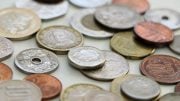
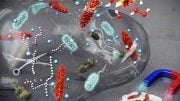
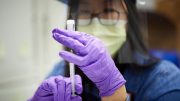
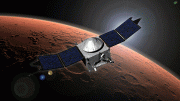
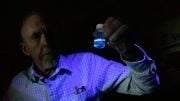
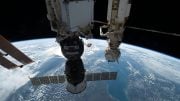
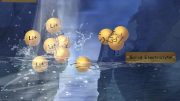
How difficult ($) would it be to setup satellite relays around the Sun? Perhaps relay(s) could be a secondary mission with the main mission being akin to the Parker Solar Probe, since I imagine it’d give new us insights if we could mine synchronous views of the Sun from different angles.